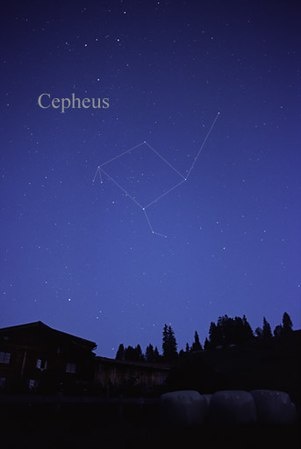What is a constellation?
Constellations are groups of stars that, joining them with imaginary lines, form perfectly identifiable figures in the night sky. To date, the International Astronomical Union has recognized 88 constellations throughout the celestial sphere.
Which is their origin?
The oldest constellations, such as Leo and Taurus, are believed to have originated around 3,000 a.C in Mesopotamia. The Babylonians used the constellations as references to mark the position of the Sun, Moon, and planets. The Egyptians took some of the constellations from the Babylonians, the Greeks took others from the Egyptians. We indirectly inherit all this knowledge through the Romans.
Who discovered them?
Claudio Ptolemy was the one who discovered the constellations, who in the 2nd century BC. C. presented a catalog of 1022 stars, grouped into 48 constellations.
How can we easily find the constellations?
We can easily find them in the sky.
Can they help us orientate?
And yes, they can help guide us easily because there is a star called the North Star that always points north.
Tell us 4 constellations (name) and add a picture.
Capricorn

Aquarium

Cepheus

Big dipper

Search and summary the story behind one of them.
The constellation Capricorn represents the figure of a goat or a sea goat in the sky. Capricorn is also a member of the zodiac, a special group of constellations that the Sun passes through each year.
There are many myths about this low-gloss constellation. Some civilizations believed that Capricorn was the portal of the gods, a region of the sky where the souls of humans passed when they died. Many saw the figure of the goat or the sea goat. A sea goat is half goat, half fish.
In Greek mythology, Capricorn was associated with Pan. While they were eating in the fields, a monster named Typhon attacked the gods. The gods turned themselves into animals and fled, but Pan couldn't decide what to be. He finally jumped into the Nile River and transformed. Since one half was in the water, he turned into a fish. But his upper body was dry, so that half remained goat.
The well-known myth identifies Aquarius, who was also known as a pourer, with Ganymede. Ganymede is the son of Laomedon, King of Troy. His father entrusted him with the task of keeping the herds in the mountains. He was, according to the stories, one of the most beautiful mortals, in such a way that Zeus, father of the gods, fell madly in love with him and becoming Eagle (another constellation) kidnaps him and takes him to Olympus. As compensation Zeus gave the boy's father some immortal divine steeds. On Olympus Ganymede becomes the divine cupbearer in charge of serving the gods.
Aquarius generally represents the figure of a man, and when considering all the stars, which for a human being are very faint or difficult to see, he takes the figure of a man with a jug which spills a liquid. Aquarius has also been identified as Deucalion, the one who was saved along with his wife Pirra from the universal flood sent by Zeus, in the Greek version of the myth.

